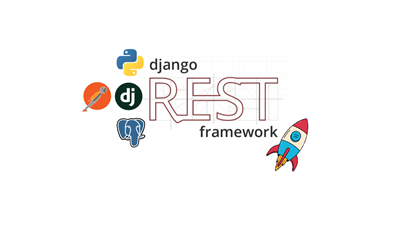
Understanding REST API: Core Concepts and Implementation Guide

37.55 % OFF
By Sekhar Metla
₹ 499.00
Understanding REST API
A REST API (Representational State Transfer Application Programming Interface) is a powerful tool used to enable communication between a client (such as a web or mobile application) and a server. RESTful APIs follow a set of architectural principles that simplify the creation, use, and maintenance of web services. They are widely used in modern software development due to their scalability, flexibility, and compatibility with web standards.
What is REST API?
At its core, a REST API allows different software systems to communicate with each other over the internet. It provides a standardized way for applications to request and manipulate data using HTTP (Hypertext Transfer Protocol). REST APIs operate on resources, which can be anything from users, products, or orders to files and settings. These resources are identified by URIs (Uniform Resource Identifiers), and the API enables CRUD (Create, Read, Update, Delete) operations on them using standard HTTP methods.
Key Principles of REST API
Statelessness: REST APIs are stateless, meaning each request from the client to the server must contain all the information needed to fulfill that request. The server doesn't retain any client context between requests. This principle ensures that RESTful services are scalable, as the server doesn't need to store session data.
Client-Server Architecture: REST follows a client-server model, where the client handles the user interface and the server handles the data and logic. This separation allows for the independent evolution of the client and server without affecting each other.
Resource-Based: In REST, everything is treated as a resource, and each resource is accessible through a unique URI.
HTTP Methods: REST APIs use standard HTTP methods to perform operations on resources:
- GET: Retrieves data from the server (e.g., fetch a list of products).
- POST: Creates new data on the server (e.g., add a new product).
- PUT: Updates existing data on the server (e.g., modify product details).
- DELETE: Removes data from the server (e.g., delete a product).
Uniform Interface: A REST API has a consistent and uniform interface, making it easier for developers to use and understand. This uniformity is achieved through standard resource identification, consistent use of HTTP methods, and standardized responses (often in JSON or XML format).
Cacheability: RESTful services can indicate which responses are cacheable, allowing clients to reuse data from previous requests, reducing the need for repeated requests to the server, and improving efficiency.
Layered System: A REST API can be designed with a layered architecture, allowing intermediaries like proxies or load balancers to improve performance, security, or scalability without affecting the client-server interaction.
Advantages of REST API
Scalability: Because REST APIs are stateless, they can easily scale to handle large numbers of requests, making them ideal for applications that experience high traffic.
Flexibility: REST APIs are flexible and can be used with any programming language or platform that supports HTTP, allowing for broad compatibility.
Simplicity: REST APIs are simple to use and understand, relying on standard HTTP methods and protocols, making them accessible even to developers with limited API experience.
Efficiency: REST APIs can be optimized for efficiency through the use of caching and by sending only the data that is necessary, reducing bandwidth usage.
Modularity: The separation of client and server in REST allows each to be developed independently, enabling modular development and easier maintenance.
Use Cases for REST API
REST APIs are used in a wide range of applications, including:
- Web Services: Enabling communication between web applications and back-end servers, such as retrieving data for display or submitting form data.
- Mobile Apps: Allowing mobile applications to interact with cloud-based back-end services to fetch and update data.
- IoT Devices: Enabling IoT devices to communicate with cloud services, sending data from sensors or receiving control commands.
- Microservices: Facilitating communication between different microservices in a distributed system architecture.
Conclusion
REST APIs are a cornerstone of modern software development, providing a standardized and efficient way to enable communication between different systems and platforms. By following REST principles and best practices, developers can create scalable, flexible, and maintainable APIs that meet the needs of various applications. Whether you're building a simple web service or a complex distributed system, understanding and utilizing REST API concepts is crucial for success.
